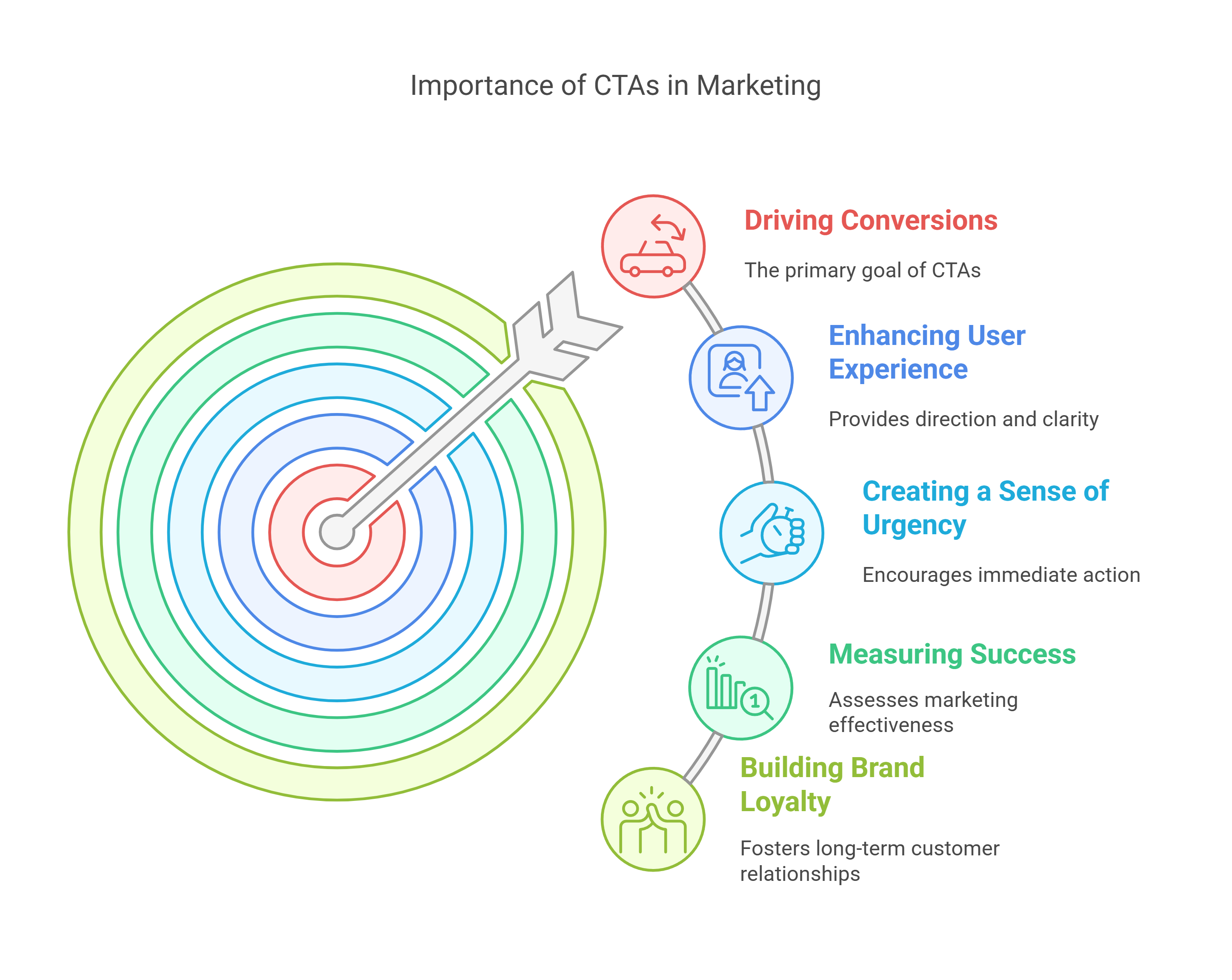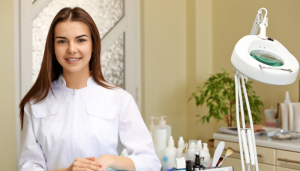Content Marketing for Medical Aesthetics

Table of Contents
ToggleContent marketing plays a vital role in the medical aesthetics field, helping clinics connect with potential clients and build lasting relationships. In an industry where trust and credibility are paramount, effective content can educate, engage, and retain clients.
This article explores various strategies for implementing content marketing specifically tailored for medical aesthetics, from understanding your audience to optimising your online presence.
Key Takeaways
Content marketing builds trust and credibility, essential for attracting clients in medical aesthetics.
Engaging and educational content can significantly enhance client interaction and loyalty.
Utilising visual content, such as before-and-after photos, can effectively showcase results and attract new clients.
A well-optimised website can improve client conversion rates through clear calls to action and user-friendly design.
Email marketing is an effective tool for nurturing leads and maintaining ongoing communication with clients.
Understanding The Importance Of Content Marketing For Medical Aesthetics
Okay, so you’re probably thinking, “Content marketing? For my aesthetics clinic?” Trust me, it’s not just about pretty pictures on Social Media (though those help!). It’s about building a real connection with potential clients and keeping your current ones coming back.
Building Trust Through Informative Content
Trust is a big deal in the aesthetics world. People are entrusting you with their appearance, so they need to know you’re the real deal. That’s where informative content comes in. Think blog posts, articles, or even short videos that explain different treatments, address common concerns, and showcase your expertise.
By providing honest, helpful information, you position yourself as a reliable source and build confidence with your audience. It’s like giving them a sneak peek behind the curtain, showing them you know your stuff and genuinely care about their well-being.
Enhancing Client Engagement
Content marketing isn’t a one-way street. It’s about getting people involved and sparking conversations. Ask questions, run polls, and encourage comments on your social media posts.
Respond to queries promptly and thoughtfully. The more you engage, the more connected your audience will feel to your brand.
Here’s a quick breakdown of engagement tactics:
Interactive Q&A sessions: Host live sessions where clients can ask questions.
Behind-the-scenes content: Show a day in the life at your clinic.
Client spotlights: Feature client stories and transformations (with permission, of course!).
Driving Patient Retention
It’s often said that keeping an existing client is easier (and cheaper!) than finding a new one. Content marketing can play a big part in patient retention. Keep your clients informed about new treatments, special offers, and upcoming events through email newsletters and targeted social media posts.
Content Type | Purpose | Frequency |
|---|---|---|
Newsletter | Updates, offers, educational content | Monthly |
Social Media Updates | Quick tips, behind-the-scenes glimpses | 2-3x/week |
Targeted Email Blasts | Special promotions, event invitations | As needed |
By consistently providing valuable content, you remind clients why they chose you in the first place and encourage them to book their next appointment.
Crafting Compelling Content Strategies
How do you actually make it good? It’s not just about churning out blog posts; it’s about having a plan. A proper strategy is what separates the wheat from the chaff, really. Let’s get into it.
Identifying Your Target Audience
First things first: who are you talking to? It sounds obvious, but you’d be surprised how many people skip this step. Are you aiming at younger clients interested in preventative treatments? Or perhaps an older demographic looking for more restorative procedures?
Knowing your audience inside and out will shape everything from the tone of your content to the platforms you use. Think about their age, income, concerns, and what they’re actually searching for online. It’s like aiming a dart – you need to know where the dartboard is!
Creating Educational Resources
People aren’t stupid; they can smell a sales pitch a mile away. Instead of constantly pushing your services, focus on providing genuinely helpful information. Think blog posts, guides, and even short videos that answer common questions about aesthetic treatments.
What are the risks? What’s the recovery like? What results can people realistically expect? The more you educate, the more trust you build.
Blog posts explaining different treatments
Downloadable guides on skincare routines
Videos demonstrating aftercare techniques
Providing value upfront establishes you as an authority and makes people far more likely to choose you when they’re ready to book a treatment.
Utilising Visual Content Effectively
Let’s be honest, nobody wants to read walls of text. Especially when we’re talking about aesthetics – it’s a visual industry! High-quality photos and videos are essential for showcasing your work and capturing people’s attention.
Leveraging Social Media For Aesthetic Practises
Social media is a big deal, right? It’s a powerful tool for aesthetic practises. If you’re not using it properly, you’re missing out on potential clients and a chance to really connect with your existing ones. It can feel a bit daunting, especially with all the different platforms and trends, but trust me, getting it right can make a huge difference.
Choosing The Right Platforms
First things first: you don’t need to be everywhere all at once. Think about where your ideal client hangs out. Is it Instagram, full of visual content? Or maybe Facebook, where people are more likely to engage in discussions?
Perhaps even TikTok, if you’re targeting a younger crowd? Focus on the platforms where you’ll get the most engagement and don’t spread yourself too thin. It’s better to do one or two platforms really well than to do a mediocre job on all of them.
Engaging With Your Audience
It’s not enough to just post pretty pictures; you need to actually talk to people! Respond to comments, answer questions, and start conversations. Run polls, ask for feedback, and make your followers feel like they’re part of a community.
Here are some ideas:
Go live and do a Q&A session.
Share behind-the-scenes glimpses of your clinic.
Create interactive stories with polls and quizzes.
Remember, social media is a two-way street. It’s about building relationships, not just broadcasting information.
Showcasing Client Transformations
Before-and-after photos are gold in the aesthetics industry. They’re visual proof of the amazing results you can achieve. But, and this is a big but, always get your client’s consent before sharing their photos.
And make sure you’re following all the advertising guidelines and ethical standards. Transparency is key here. It’s also a good idea to include testimonials alongside the photos, so potential clients can hear directly from satisfied customers.
Here’s a simple table to illustrate the point:
Content Type | Engagement Level | Potential Reach |
|---|---|---|
Before & After Photos | High | Wide |
Educational Posts | Medium | Moderate |
Clinic Updates | Low | Narrow |
Social media is a marathon, not a sprint. It takes time and effort to build a following and see results. But with a solid strategy and a commitment to engaging with your audience, you can turn social media into a powerful tool for growing your aesthetic practise.
Optimising Your Website For Client Conversion
Your website is often the first interaction potential clients have with your aesthetics practise. It’s not just an online brochure; it’s a powerful tool for converting visitors into paying clients. Let’s explore how to make your website work harder for you.
Implementing User-Friendly Design
A user-friendly website is intuitive and easy to navigate. Think about the client journey. Can visitors quickly find the information they need, such as services offered, pricing, and contact details? A clean, uncluttered design with clear calls to action is essential. Consider these points:
Ensure your website is mobile-responsive. Many people browse on their phones.
Use high-quality images and videos to showcase your work.
Keep your website updated with fresh content.
A well-designed website builds trust and encourages visitors to explore further. If your website looks outdated or is difficult to use, potential clients may go elsewhere.
Incorporating SEO Best Practises
Search Engine Optimisation is vital for driving organic traffic to your website. It involves optimising your website’s content and structure to rank higher in search engine results pages (SERPs). Here’s how to get started:
Conduct keyword research to identify the terms your target audience is using.
Optimise your website’s meta descriptions and title tags.
Create high-quality, informative content that is relevant to your audience.
Creating Clear Calls To Action

Calls to action (CTAs) are prompts that encourage visitors to take a specific action, such as booking a consultation or signing up for a newsletter. Effective CTAs are clear, concise, and visually appealing. Use action-oriented language and place CTAs strategically throughout your website. Some examples include:
“Book a Consultation Today”
“Download Our Free Guide”
“Contact Us for More Information”
Utilising Email Marketing To Nurture Leads
Email marketing? It might sound a bit old-school, but trust me, it’s still a powerhouse for aesthetic practises. It’s all about building relationships and guiding potential clients along their journey.
Think of it as your digital handshake, keeping you top-of-mind and showcasing your expertise.
Segmenting Your Audience
Don’t treat everyone the same! Segmenting your audience is key. Tailor your messages based on their interests, past treatments, or where they are in their decision-making process. For example:
New subscribers get a welcome series introducing your clinic and services.
Existing clients receive exclusive offers or updates on new treatments.
Those who’ve shown interest in a specific treatment get targeted information.
This way, you’re sending relevant content that resonates, not just generic blasts that get ignored.
Crafting Engaging Newsletters
Your newsletter is your chance to shine! Make it informative, engaging, and visually appealing. Think beyond just promoting services. Share:
Before-and-after photos (with consent, of course!).
Expert advice on skincare or treatments.
Clinic news and events.
Client testimonials.
Keep it concise, use clear language, and always include a call to action. A well-crafted newsletter keeps your audience hooked and eager to learn more.
Automating Follow-Up Campaigns
Automation is your friend! Set up automated email sequences to nurture leads and guide them towards booking a consultation. Consider:
A series of emails after someone downloads a lead magnet (like a guide to anti-wrinkle injections).
Follow-up emails after a consultation, providing additional information and answering any questions.
Reminders for clients to book their next appointment.
Automating these campaigns saves you time and ensures that no lead falls through the cracks. It’s like having a dedicated marketing assistant working around the clock.
By automating, you can ensure consistent communication and improve your chances of converting leads into loyal clients.
Measuring The Success Of Your Content Marketing Efforts
Okay, so you’ve put all this effort into creating content, sharing it, and generally trying to get the word out about your medical aesthetics practise. But how do you know if it’s actually working? It’s not just about feeling busy; it’s about seeing real results. Let’s break down how to measure if your content marketing is hitting the mark.
Tracking Key Performance Indicators
KPIs, or Key Performance Indicators, are basically the vital signs of your content marketing. They tell you what’s healthy and what needs attention. Here are a few to keep an eye on:
Website Traffic: Are more people visiting your site? Use tools like Google Analytics to see where they’re coming from (social media, search engines, etc.).
Engagement Metrics: How are people interacting with your content? Look at things like time spent on a page, bounce rate (how quickly people leave), and social media shares.
Lead Generation: Is your content turning visitors into potential clients? Track form submissions, downloads of resources (like e-books), and sign-ups for consultations.
Conversion Rates: Are those leads turning into actual paying clients? This is the ultimate measure of success. Keep a close eye on this one.
Analysing Client Feedback
Numbers are great, but they don’t tell the whole story. You need to hear directly from your clients to understand how your content is impacting them. Here are a few ways to gather feedback:
Surveys: Send out regular surveys to your clients asking about their experience with your content. What did they find helpful? What could be improved?
Social Media Monitoring: Keep an eye on what people are saying about your practise on social media. Are they mentioning your content? Are they asking questions that your content could answer?
Direct Communication: Encourage clients to leave reviews and provide feedback directly to your staff. Sometimes, the most valuable insights come from casual conversations.
Client feedback is gold. It helps you understand what’s working, what’s not, and what your audience actually wants to see. Don’t be afraid to ask for it, and be prepared to act on it.
Adjusting Strategies Based On Data
So, you’ve got your KPIs and your client feedback. Now what? It’s time to put that information to use and adjust your content marketing strategy accordingly. Here’s how:
Identify Trends: Look for patterns in your data. Are certain types of content performing better than others? Are there specific topics that resonate with your audience?
Experiment: Don’t be afraid to try new things. If something isn’t working, ditch it. If something is working well, do more of it.
Refine Your Approach: Continuously tweak your content, your channels, and your messaging based on what you’re learning. Content marketing is an ongoing process, not a one-time event.
Remember, the goal is to create content that attracts, engages, and converts potential clients. By tracking your progress and making adjustments along the way, you can ensure that your content marketing efforts are delivering the results you want.
Staying Compliant With Marketing Regulations
It’s easy to get caught up in the excitement of promoting your aesthetic practise, but it’s really important to make sure you’re following all the rules. Compliance isn’t just a box to tick; it’s about building trust and protecting your clients. Think of it as the foundation for a sustainable and ethical business.
Understanding Advertising Guidelines
Marketing must be truthful and supported by evidence.
Promotions shouldn’t pressure people into making hasty decisions.
Ads shouldn’t target under-18s.
Before-and-after photos need to be accurate and not misleading.
It’s worth spending time familiarising yourself with these guidelines. Ignorance isn’t an excuse, and getting it wrong can lead to fines or even having your ads banned.
Maintaining Ethical Standards
Ethics go beyond just following the rules. It’s about doing what’s right for your clients. This means being honest about the potential risks and benefits of treatments, not exaggerating results, and always putting their well-being first. Some things to avoid:
Inappropriate offers that trivialise medical procedures.
Misleading images that distort reality.
Targeting vulnerable people with insecurities.
Navigating Patient Privacy Concerns
Patient privacy is a big deal, and you need to handle personal data with care. The General Data Protection Regulation (GDPR) sets out strict rules about how you collect, store, and use patient information.
Make sure you have a clear privacy policy and that you’re getting proper consent before using anyone’s data for marketing purposes. It’s also a good idea to train your staff on data protection best practises. It might seem like a hassle, but it’s essential for maintaining client trust and avoiding legal trouble.
Conclusion
Effective content marketing can truly transform your medical aesthetics practise. By sharing valuable information and engaging with your audience, you can build trust and encourage potential clients to choose your services. Remember, it’s not just about promoting treatments; it’s about creating a connection with your clients.
So, take the time to craft content that speaks to their needs and concerns. With the right approach, you can not only attract new clients but also retain existing ones, ensuring your clinic thrives in a competitive market. Start by this FREE website plan and start implementing these strategies today, and watch your practise flourish.
Frequently Asked Questions
What is content marketing in medical aesthetics?
Content marketing in medical aesthetics is when clinics create and share valuable information to attract and engage clients. This can include blog posts, videos, and social media updates about treatments and skin care.
How can content marketing help my aesthetic practise?
Content marketing can help your practise by building trust with potential clients, keeping them informed, and encouraging them to book appointments. It helps to show that you are knowledgeable and care about their needs.
What types of content should I create?
You should create educational content like articles about different treatments, tips for skin care, and success stories from clients. Visual content, like before-and-after photos, can also be very effective.
Which social media platforms are best for aesthetic clinics?
Instagram and Facebook are great for aesthetic clinics because they are visual platforms. You can share photos, videos, and engage with your audience easily on these sites.
How do I measure the success of my content marketing?
You can measure success by tracking how many people visit your website, how many new clients you gain, and how often your content gets shared or liked on social media.
What should I consider to stay compliant with marketing regulations?
Make sure to follow advertising guidelines set by health authorities, avoid misleading claims, and respect patient privacy when sharing any client information.








